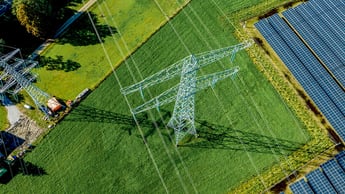Data-driven control for your IT operations
To systematically improve your IT operations, you need to transform into a lean and mean IT operations factory: an end-to-end approach that integrates all layers (infra, middleware and applications) and automates as many steps as possible to stay in control. The challenge of optimizing lies in the fact that elements are connected and dependent on each other: one limiting factor can influence the entire process. The IT operations factory creates an always-on IT for (mission critical) applications.
What defines this end-to-end approach? In three terms: automation, DevOps collaboration, and analytics. The focus in our end-to-end approach is to automate the complete application landscape using infra-as-code. Automatically deployed by predefined templates, therefore fast and uniform, giving your engineers more time to focus on development instead of operations. To realize this a DevOps team is involved to manage the conditions of infrastructure, middleware and applications. This used to be executed by multiple teams that operated separately. But end-to-end also means: an agile approach and look at the complete landscape from a multidisciplinary angle (DevOps) with a focus on continuous results.
Important is the role of the customer as Product Owner, providing the knowledge and priorities from a business-angle. Only then are you able to manage and optimize an entire IT landscape, and really start to add business value in terms of productivity, quality and costs. As such, it goes without saying that also a metrical and thus analytical view on all data from the landscape is part of the end-to-end approach. If the automation is in place and we can seamlessly control all configurations it makes even more sense to drive this further by a consistent use of data and analytics.
Insights into costs, configuration items and security.
One of the advantages of our end-to-end approach is the fact that it is possible to automatically deploy fixes, upgrades, improvements or scaling through code. This ensures a rapid and controlled deployment of changes while maintaining a positive user experience. In an infra-as-code managed environment you can run standard templates to scale up your server capacity instantly. Or even better, use your data and analytics to fire triggers based on a series of conditions to run that template automatically. And – important from a cost control point of view – automatically scale down again as soon as load turns back to normal.
In-depth analysis and data-driven optimization
Simply monitoring metrics doesn’t really make your environment smarter. It only makes you better informed. Next step is to apply analytics and machine learning to it and combine correlated data with user experience. This fuels the continuous process of optimization based on feedback from end users and the business.
It is our job to continuously tweak and improve to create a smoothly running IT operations factory. By managing the IT landscape end-to-end, we provide our agile teams with insights to remove the waste and improve accuracy while operating. For example, optimizing peak load effects, which could be defined as a single job that claims a high number of cores within a time span of less than a minute. Feedback from end users, combined with data, tells us when peak loads cause performance issues. This information is then used in our scaling algorithm so that we can predict performance-impacting peaks and scale automatically according to the users’ needs. It’s evident that the longer we monitor the data, the better we get to know the end users’ way-of-working and relate into the parameters as configured, which in turn enables us to anticipate faster on their needs. Applying advanced data science techniques such as deep learning offers us the means to model the behavior of your IT landscape even better and with this predict its future behavior.
End-to-end
Every business has an IT environment consisting of infrastructure, middleware and applications that are connected and dependent on each other. By working together in an end-to-end approach, you can automate complete application landscapes using infra-as-code. This means you free up time to focus on improving business results. We believe in team effort, DevOps ways of working, collaborating with our customers, and using analytics. To increase productivity by combining engineering and data science with a persistent focus on business value, costs and quality. Digital transformation for IT.






